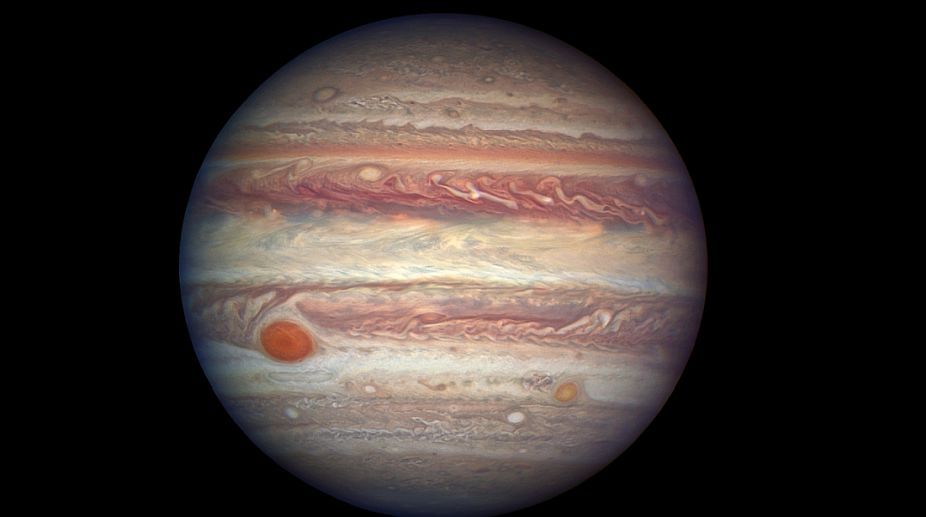NASA head Nelson says China hiding military presence in space
"I think that we just better not let down our guard," Nelson added.

Jupiter (Photo: IANS Photo)
NASA's Hubble space telescope has captured Jupiter in all of its up-close glory, offering spectacular views of its colourful, roiling atmosphere and the legendary Great Red Spot.
On April 3, 2017, as Jupiter made its nearest approach to Earth in a year, Hubble captured the dazzling image of the solar system's largest planet when it was comparatively close to Earth, at a distance of 668 million km.
The giant planet is now at "opposition", positioned directly opposite the Sun from the Earth. This means that the Sun, Earth and Jupiter line up, with Earth sitting between the Sun and the gas giant.
Advertisement
Opposition also marks Jupiter's closest point to us, and the planet appears brighter in the night sky than at any other time in the year, NASA said in a statement on Thursday.
This positioning allowed a team led by Amy Simon of NASA's Goddard Space Flight Centre in Greenbelt, Maryland to observe Jupiter using Hubble's Wide Field Camera 3.
Hubble photographed exquisite details in Jupiter's atmosphere, as small as about 129 km across.
With its immense and powerful storms and hundreds of smaller vortices, the atmosphere of Jupiter is divided into several distinct, colourful bands, parallel to the equator.
Jupiter is best known for the Great Red Spot, a long-lived storm roughly the diameter of Earth.
However, the Great Red Spot is slowly shrinking — a trend seen since the late 1800s. The reason for this phenomenon is still unknown.
Hubble, a project of international cooperation between NASA and ESA (European Space Agency), will continue to observe Jupiter in hopes of solving this mysterious riddle, the US space agency said.
Advertisement